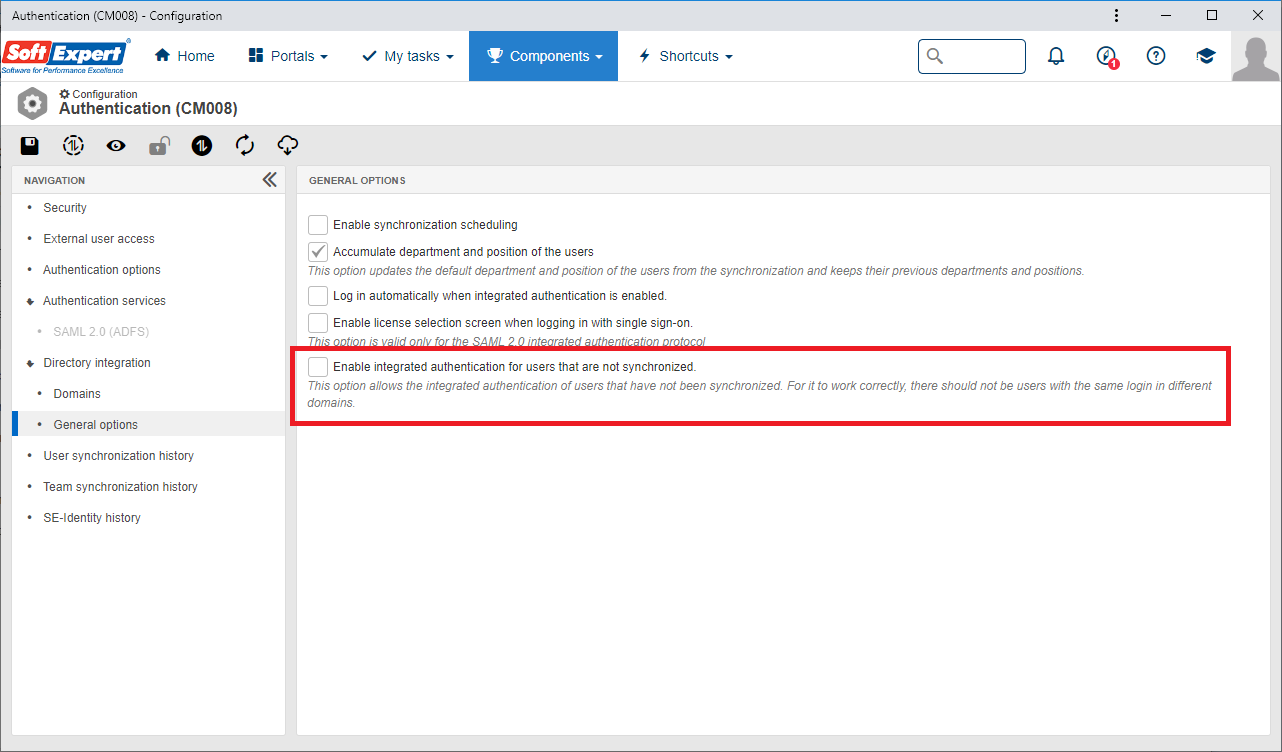
Single Sign-On when there are no user synchronization directories
In some situations, the customer wishes to use the single sign-on feature even if the user synchronization is not used.
Previously, however, for it to be possible to use the single sign-on, the system would require the existence of an integration with a directory service, such as Active Directory, so that synchronized users could perform this authentication.
Now, from this version onwards, if the customer does not have integration with any directory services and still wishes to use single sign-on for registered users (e.g. manually created users, users created via Web Service), they simply need to enable the "Enable integrated authentication for users that are not synchronized" parameter in the authentication configuration screen (Configuration  Configuration
Configuration  Authentication), in the "Directory integration
Authentication), in the "Directory integration  General options" section.
General options" section.

Indexing S3 files in Elastic Search
With the feature from SoftExpert Document that allows storing files in Amazon S3 (2.0.14), it was necessary to allow searching for these files in the general search filter of the product, which aims to facilitate searches by the users.
Therefore, the indexing and content search engine, Elastic Search, has been improved, and now offers support to index and search for files stored in Amazon S3.
Optimization in the pending tasks count
A general revision has been performed in the user pending tasks count routine (My Tasks) in order to optimize the use of the database and increase the count performance.
In some cases in which the count of one task type took about 4 seconds, for example, there was a reduction of approximately 93%, and now it only takes 250 milliseconds.
Other improvements were also performed to avoid counting unnecessary tasks, such as those of inactive users, or counting tracking tasks when the user is not tracking any tasks.
Consequently, with these actions, it was possible to reduce the demand on the database, making more room for it to execute other tasks, which also reduces their concurrence and avoids slowness, especially when the counter must be updated.
Previous versions
View also the improvements made to this component in previous versions:
